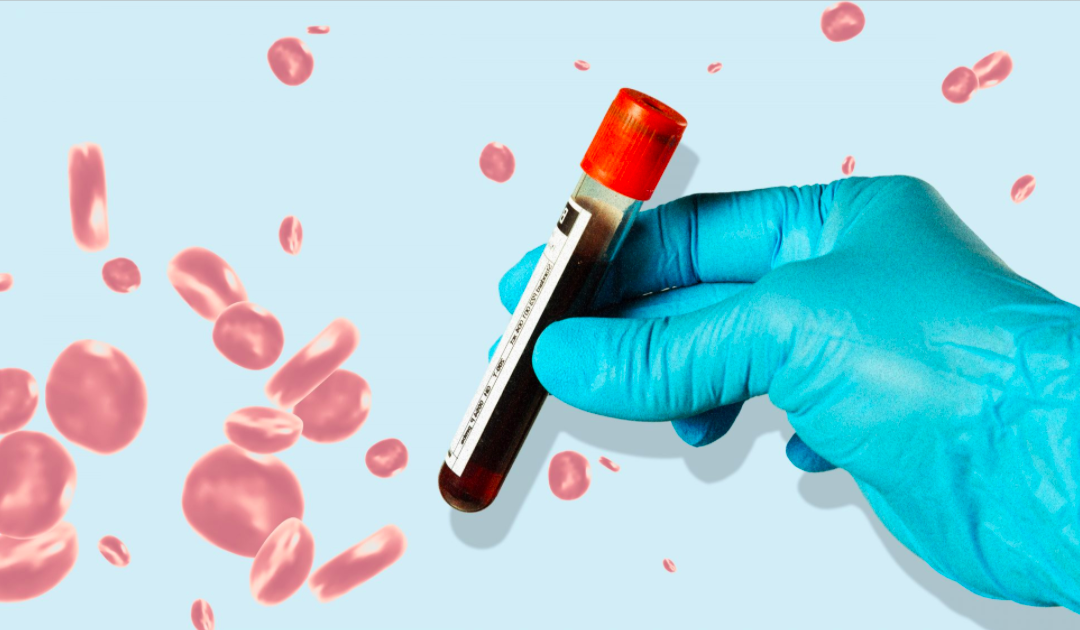
Cancer is the second leading cause of death in the US—and it has been for years, according to data from JAMA published in March. And while a large number of people often survive the disease, thanks to ever-evolving medical treatments, many people are still diagnosed too late for treatment to be effective.
Enter: Galleri, a multi-cancer, early detection blood test, manufactured by the company GRAIL. The test isn’t brand-new—biotechnology company Illumina Inc. announced the formation of GRAIL back in 2016 with the intent of creating a pan-cancer screening test to help detect early signs of cancer in asymptomatic patients—something that could “decrease cancer mortality,” according to a press release at the time.
Five years later, in June 2021, GRAIL announced that Galleri is now available nationwide, as a prescription-only cancer screening test. The announcement was the culmination of years of research, backed by notable institutions like the Mayo Clinic, Cleveland Clinic, Dana Farber Cancer Institute, and more.
Of course, any advances in cancer detection or treatment are welcomed news—but what else is there to know about Galleri, and who can benefit from the test right now? Here’s what you need to know about the science behind the test, and what it can—and can’t—tell you about your health.
How exactly does Galleri work?
In its first-ever press release, GRAIL touted the early cancer-detection test—which would later be named Galleri—as a “simple blood test,” but the science behind that simple test is quite complex.
Ask a doctor and they’ll tell you the Galleri test detects circulating tumor-derived, cell-free DNA (cfDNA) that could indicate the presence of cancer using a targeted methylation bisulfite sequencing assay and machine learning techniques.
That’s kind of a mouthful—in order to begin understanding what that means, it’s important to understand that cancer is a disease of the genome, or all the the genetic information of an organism, made up of DNA.
Nearly all of the cells in your body have the same DNA, according to the US National Library of Medicine. But unlike the DNA in healthy cells, the DNA in cancer cells carry cancer-specific signals; tumors shed this DNA into the blood. Multi-cancer early detection testing looks at blood samples for DNA fragments and their cancer-specific signals to identify cancer and where that cancer signal originated in the body.
The Galleri test requires a prescription from a licensed health care provider—telemedicine or otherwise—who can request a testing kit on your behalf by ordering it electronically through Galleri’s provider portal or by completing a test requisition form available on their website. Next, you bring your unopened Galleri specimen collection kit to your doctor’s office or a lab where you’ll have two vials—about 1.5 tablespoons—of blood drawn from a vein in your arm before it’s shipped off to a GRAIL lab for processing that can take up to 10 business days.
The results go directly to the healthcare provider who ordered the test for you. They’ll either read “Cancer Signal Not Detected” or “Cancer Signal Detected” with “Top Predicted Cancer Signal Orgin(s)” which predicts where the cancer may be coming from. Your doctor can use these results to order further testing to make a formal diagnosis.
What Galleri can tell you about your health—and what it can’t
As of right now, the The United States Preventive Services Task Force (USPSTF) only recommends routine screenings for colon, breast, cervical, prostate, and lung cancers for those with risk factors (age, family history, personal history, etc.). But those cancers account for just 29% of all cancer deaths according to the American Cancer Society—that leaves a large chunk of cancer deaths due to disease for which screening tests aren’t available.
Galleri, on the other hand, has been shown to detect more than 50 types of cancer—45 of which don’t have a recommended screening test available.
The research has been thorough: A group of researchers from Cleveland Clinic, The US Oncology Network, and several additional well-respected institutions joined GRAIL to complete the The Circulating Cell-Free Atlas Study (CCGA), which was designed to develop and validate multi‑cancer early detection blood tests in 15,000 subjects with and without a known cancer diagnosis. The tests delivered negative readings to 99.5% of participants who did not have cancer using a measure known as “specificity,” and served up false positives to just 0.5% of participants.
What’s more, researchers were able to detect cancer in 51.5% of cancer patients using a measure known as “sensitivity.” The blood tests were more likely to detect more advanced cancers, and was most accurate in detecting 12 kinds of cancer—including liver, head and neck, esophagus, pancreas, and ovarian—for which there are no routine screening tests.
In a separate PATHFINDER study, when researchers looked at 6,629 asymptomatic subjects over 50 years old, an earlier version of Galleri detected 13 types of cancer across 29 participants. About 44.6% of positive test results led to a cancer diagnosis, and nearly 40% of those cancers were stage 1 or stage 2—a good thing because early detection is pivot for improving cancer outcomes. What’s more, in 96.3%t of cancer cases, Galleri was correct on its first or second guess at where the cancer originated.
So all in all, how promising are these results? “The test is a step forward and very important for early detection of certain cancers that we don’t typically screen for,” Christian Rolfo, MD, professor of medicine and associate director for clinical research at the Center of Excellence for Thoracic Oncology at Mount Sinai’s Tisch Cancer Institute, tells Health.
But, while Galleri can help send your doctor in the right direction to conduct further testing and determine whether cancer is indeed present, he stresses that these new blood tests cannot diagnose cancer and should not replace routine cancer screenings—rather, they should compliment them. “We need to continue to use imaging for diagnostics,” Dr. Rolfo says.
GRAIL is on the same page: “Galleri is not a diagnostic test and is intended to be used as a complement to existing cancer screenings,” a GRAIL spokesperson tells Health.
Dr. Rolfo’s biggest concern is that on average, the tests pick up just 51.5% of cancers. What’s more, the test’s sensitivity, or ability to detect cancer, varies based on cancer type and cancer stage, which isn’t optimal. For instance, Galleri has been shown to detect just 18.2% of kidney cancers compared to 93.5% of lung cancers; while overall, it picks up 90.1% of stage 4 cancers, it only detects an average of 16.8% of stage 1 cancers. “The test sensitivity is still low among people with stage 1 cancer, which is when we want to detect it since we can detect bigger tumors with imaging,” Dr. Rolfo says.
Another way Galleri falls short, so far as innovation is concerned: It can’t help predict your cancer future. Unlike the BRCA blood tests, which measure your genetic risk of developing cancer at some point, Galleri simply tells you whether cancer DNA is currently present in the blood at any given moment—not whether you have a higher risk fo developing it in the years to come.
“It’s still good to have a method to detect certain cancers at an earlier stage,” Dr. Rolfo says.
Who can (and should) use the Galleri test?
At the moment, Galleri is only recommended for people with a heightened cancer risk—being older than 50 and having a family history of cancer are both qualifiers. Because your eating habits, lifestyle, home or work environment, or genes could also increase your cancer risk, it’s best to talk to your doctor about whether you’re a candidate for Galleri testing.
While GRAIL is careful not to prescribe its tests to any particular demographic, in clinical testing, their researchers enrolled participants who had a history of smoking, documented genetic cancer predisposition, or personal history of cancers that affect the blood, a GRAIL spokesperson told Health.
If this doesn’t sound like you, and yet you’ve already begun to dial your doctor’s number, slow down. “We don’t want patients with no known risk factors coming in asking for tests because they are afraid of cancer—we’re not there with the technology yet,” Dr. Rolfo says.
And of course there’s a chance you might not want this kind of testing in the first place. After all, facing your medical fate can be super scary and disruptive, particularly in the absence of symptoms—something GRAIL has already thought about.
“We know that a cancer diagnosis can affect the mental health of patients, families and their caregivers; feelings of depression, anxiety and fear are not uncommon,” wrote a GRAIL spokesperson via email. “We believe that early detection provides hope and information that patients deserve.”
Galleri, which costs $949, isn’t currently covered by insurance, although you might be able to use your FSA or HSA dollars to pay for it. And while the tests are available in all 50 states, GRAIL is still working toward an FDA approval.
The fact remains that early cancer detection can reduce cancer mortality rates—and beating cancer begins with knowing you have it, as Galleri notes on its site. With the average person undergoing multiple routine screenings as they get older, be it a mammogram, pap smear, or colonoscopy, soon, Galleri testing—or other modes of early cancer detection—could be just as commonplace.
This article was republished from Health.

